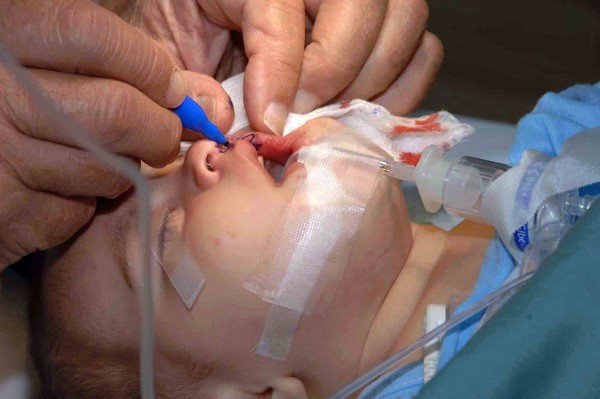
AmeriFace and the American Cleft Palate-Craniofacial Association have partnered with a team of nonprofit organizations to raise awareness about cleft and craniofacial conditions. Special events are being held across the country throughout the month of July to support children born with facial abnormalities.
Cleft-Lip and Cleft Palate: The 4th Most Common Birth Defect in the United States
According to the American Cleft Palate-Craniofacial Association, over 7,000 babies are born with a cleft-lip condition annually. Cleft-lip is one of the four most common birth defects seen in the United States. These facial malformations occur during the early stages of pregnancy. An insufficient amount of tissue develops in the oral area, causing the skin around the mouth or lips to form improperly.
A cleft-lip is when the skin of the upper lip is split into two sections, often from the bottom of the nose into the area of the upper jaw. Cleft palate is when either the hard or soft areas of the roof of the mouth are split, resulting in an opening. A cleft-lip can occur with or without a cleft palate, as they are two different conditions. Both boys and girls can be born with a cleft-lip or cleft palate, and the condition is most commonly seen in babies of Latino, Asian, and Native American ethnic backgrounds. The causes of cleft conditions remain largely unknown, but studies have revealed that certain harmful drugs taken during pregnancy can be contributing factors to the development of some facial abnormalities.
Children born with cleft conditions experience difficulties adapting to a normal life. These difficulties include trouble eating food, issues with speech, susceptibility to ear and hearing issues, and dental issues. Cleft conditions are most commonly treated by plastic surgeons, dentists, and oral surgeons. Other specialists may be needed to provide genetics, speech, or psychological advice to assist with social difficulties.
Craniofacial Conditions: Having to Face an Abnormal Life
People of all ages currently live with craniofacial conditions throughout the United States. These conditions can range from mild to severely life-threatening depending upon their causes, which can include injuries from accidents, cancer, damaging diseases, or being badly burned. Though having a craniofacial condition can seem like a scary and difficult challenge, many people across the globe with craniofacial conditions have found happiness, fulfillment, and success in life.
Bridging the Gap: Coming Together to Support Cleft & Craniofacial Research Efforts
During the month of July, you can do your part to help communities across America come together and be strong in the face of facial abnormalities. Donations can be made to AmeriFace at www.nccapm.org for the advancement of craniofacial condition research efforts. Official Cleft/Craniofacial Awareness bracelets can be purchased through AmeriFace, complete with the campaign’s color purple and inspirational message, “Be Brave.” All proceeds will go to AmeriFace’s campaign supporting families affected by craniofacial conditions.
To learn more about cleft and craniofacial conditions, informational materials and educational resources are available on the AmeriFace cleftAdvocate page. AmeriFace has also made free informational materials available for distribution to those who wish to help raise awareness, as well as families in need of support. Through every selfless effort made to help those with craniofacial conditions, AmeriFace has held true to its mission statement, “Making a world of difference in a world of facial differences,” for over 26 years.
To learn more about how to provide the best support to the families of patients, such as those with craniofacial conditions, visit our article, “8 things you can do to help your patient’s families.”

















